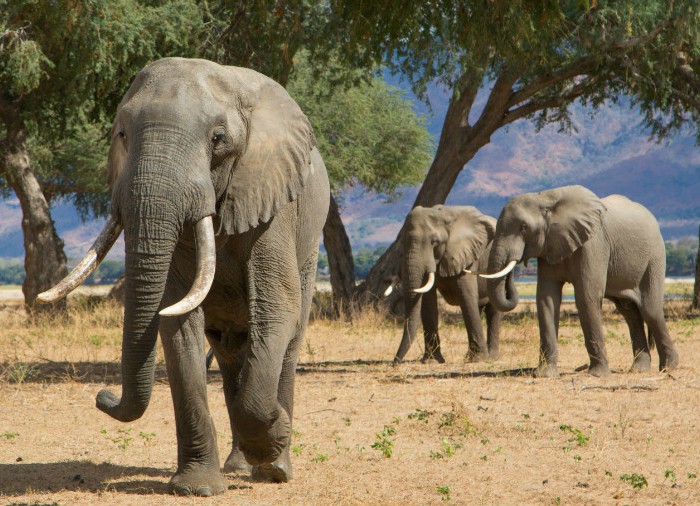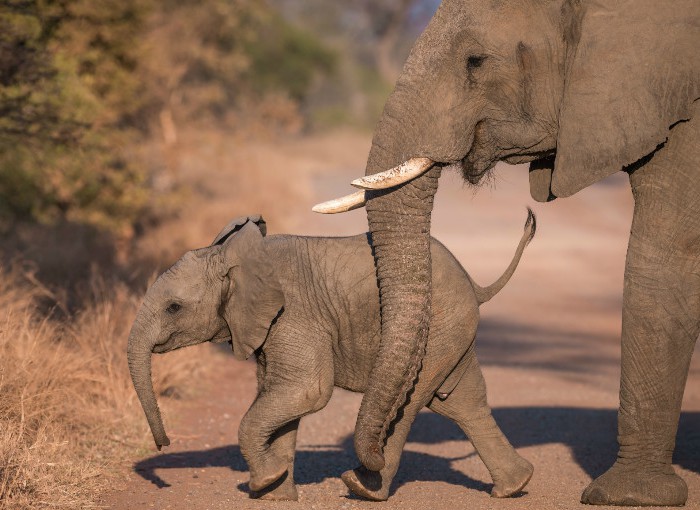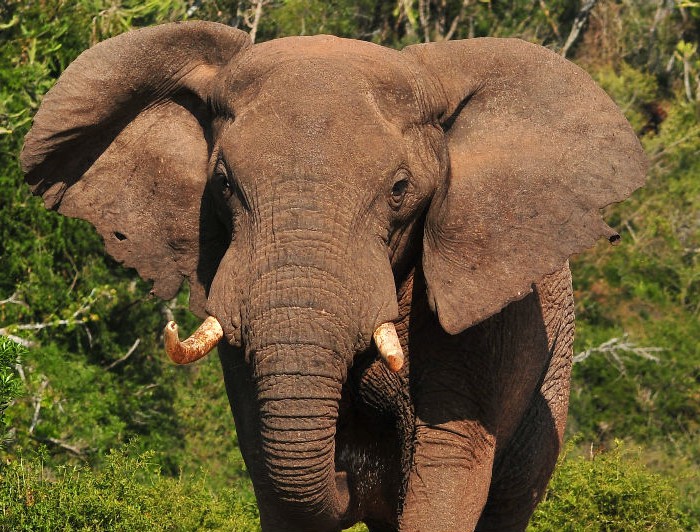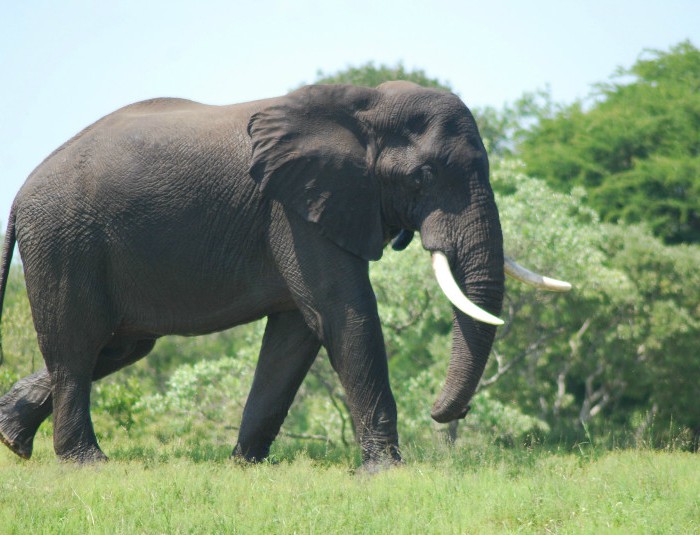Elephants have 26 teeth in all, 24 of these are molars and the final two are the tusks. These modified incisors of the upper jaw grow continuously throughout the elephant’s life. However, some elephants are tuskless due to a chance genetic mutation.
An elephant will use its tusks for digging, fighting and accessing food such as the inner bark of trees which is highly nutritious. Discover more elephant facts at African elephant and the elephant’s trunk.
The elephant is one of the Big Five. To find out the other four animals that make up the Big Five please check out our article: 25 astonishing facts about Africa’s Big 5
Interesting facts about elephant teeth
1. Chewing
Elephants chew their food with a forward/back motion unlike all other herbivores whose jaw chews in a sideways motion.
2. Big tusker gene
Man’s hunting of elephants with big tusks over the last 100 years has led to a reduction of the average size of tusks. This is due to the “big tusker gene” being gradually wiped out.
3. Name derivation
The word elephant is derived from the Greek word, elaph, meaning ivory.
4. Record breaking tusks
The heaviest tusks recorded were found near Mt Kilimanjaro and weighed in at 102.3 kg and 97.3 kg.
5. Molars
Once an elephant has worn down its sixth and final set of molars it will no longer be able to chew its food properly. As a result it will slowly starve and become more susceptible to disease.
6. Number of teeth
In addition to a pair of tusks elephants have a further 24 teeth. These are molars which are in six sets of four, as one set is worn down it gets replaced by the next set pushing in from behind.
7. Genetic mutation
A genetic mutation means not all elephants have tusks.
8. Tusks
The elephant’s tusks are modified incisor teeth made up of fine-grained hard dentine that’s formed in layers.
9. Poaching
Every 15 minutes an African elephant is killed for its ivory tusks. The illegally sourced and traded ivory is carved into jewellery and ornaments.
Frequently asked questions
What is the scientific name of an elephant?
The genus, Loxodonta, is in reference to the elephant’s tusks and stems from the Ancient Greek words, loxos meaning slanting, crosswise and odous for tooth. The specific name africana, refers to Africa where African elephants are found. The binomial name is Loxodonta africana.
The Asian elephant is a separate species, Elephas maximus. Both the African and Asian elephants belong to the family Elephantidae.
What are elephant tusks?
The elephant’s tusks are modified incisor teeth made up of fine-grained hard dentine that’s formed in layers. These teeth, the tusks, are clearly visible protruding from the mouth of the elephant. It is for this ivory that elephants are under threat due to poaching.
What type of teeth do elephants have?
Elephants have two types of teeth. A pair of tusks which are the incisors and a further 24 teeth. These are molars which are in six sets of four, as one set is worn down it gets replaced by the next set pushing in from behind.
Do all elephants have tusks?
A genetic mutation means that not all elephants have tusks and the number of tuskless elephants, particularly females, is increasing. This is thought to be a result of evolution as the animals with small tusks or no tusks survive the poachers rifle.
Additionally man’s hunting of elephants with big tusks over the last 100 years has led to a reduction of the average size of tusks. This is due to the big tusker gene being gradually wiped out.
What do elephants use their tusks for?
Tusks are a tool that can be used for a variety of uses. Everything from stripping nutritious bark off trees to digging, lifting things and for fighting. Elephants are known to prefer one tusk over the other. Having a master tusk is similar to humans being left or right handed.
Vote for the fact you find most fascinating
Elephants chew their food with a forward/back motion unlike all other herbivores whose jaw chews in a sideways motion.
The elephant’s tusks are modified incisor teeth made up of fine-grained hard dentine that’s formed in layers.
A genetic mutation means not all elephants have tusks.
Man’s hunting of elephants with big tusks over the last 100 years has led to a reduction of the average size of tusks. This is due to the “big tusker gene” being gradually wiped out.
The heaviest tusks recorded were found near Mt Kilimanjaro and weighed in at 102.3 kg and 97.3 kg.
Every 15 minutes an African elephant is killed for its ivory tusks. The illegally sourced and traded ivory is carved into jewellery and ornaments.
The word elephant is derived from the Greek word, elaph, meaning ivory.
Once an elephant has worn down its sixth and final set of molars it will no longer be able to chew its food properly. As a result it will slowly starve and become more susceptible to disease.
In addition to a pair of tusks elephants have a further 24 teeth. These are molars which are in six sets of four, as one set is worn down it gets replaced by the next set pushing in from behind.







